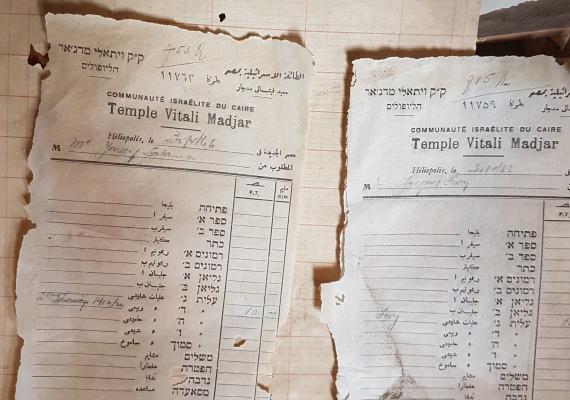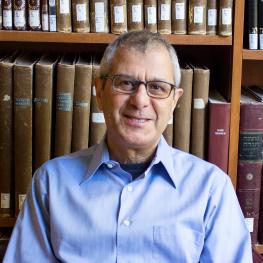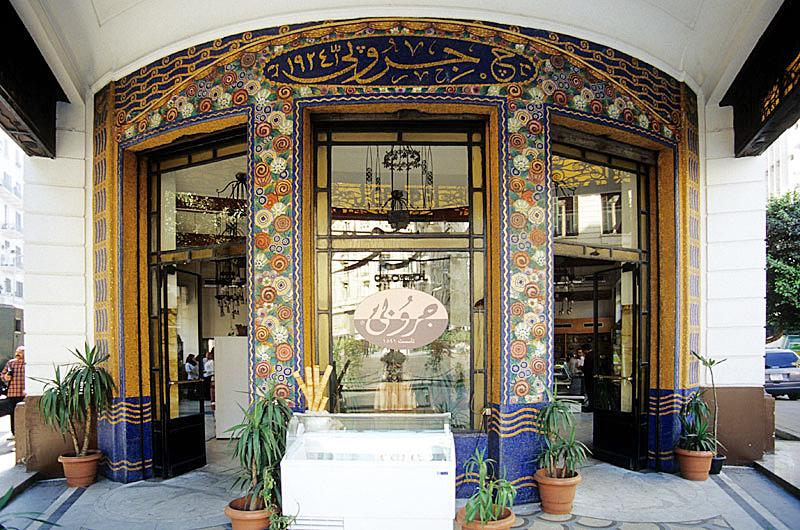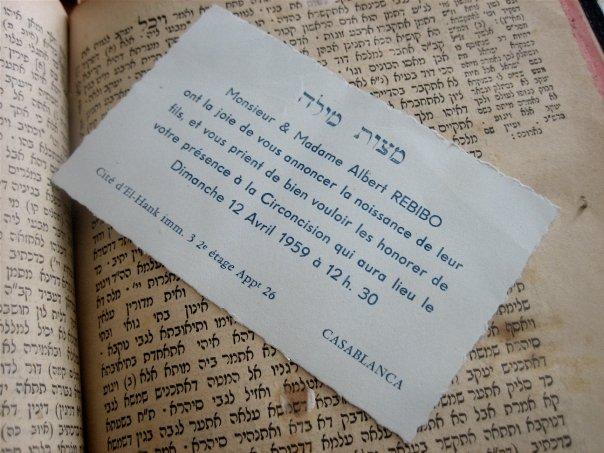The Living Archive of the Jewish Community in Arab Countries
Jewish life and history continue to be part of the dynamic cultural fabric of the Middle East and North Africa.

The order of the aliyah to read the Torah, Vitali Madjar Synagogue, Heliopolis, Cairo.
Today, Jews constitute only tiny communities in the Middle East and North Africa (MENA) region, but the region has a rich and varied Jewish past that is now preserved in an extensive reservoir of material culture. Numerous synagogues, cemeteries, ritual objects and other Judaica, and writings are dispersed across Arab and Islamic countries. Studying these remnants opens up their interconnectedness with the societies and cultures around them, presenting scholars with an untapped but profoundly enriching avenue for exploring the histories of Jewish communities that thrived in these regions for centuries and, in some cases, millennia. Contrary to a predominant academic prejudice, these materials are not dead relics of the past but comprise part of living national, social, and communal memory that connects past and present. Jewish sites and artifacts in MENA serve as authentic conduits through which the narratives of local Jewish communities can be recontextualized within their lived environments and across different epochs.
Throughout the Middle East and North Africa, the archive of the Jewish past is sustained and extended by the ongoing creation of local cultural products—such as documentaries, popular TV series, and literature—that make clear how the bygone Jewish presence is entangled with its heritage in the Arab world today. In addition to historical sources and present-day cultural creativity, official declarations, state ceremonies, and widespread public discourse across print and digital media bring these materials into new contexts.
This living archive is also enriched by the occasional unearthing of rare historical materials, sometimes in unexpected places and ways. Noteworthy is the revelation of historical records pertaining to Jewish life in Iraq subsequent to the retrieval of the Iraqi Jewish Archive, previously housed in a Baghdad intelligence headquarters basement during the US occupation. This extensive collection, comprising over 2700 books and tens of thousands of documents, was relocated to the US National Archive in 2003, where it underwent preservation and digital restoration, and is presently accessible remotely.
Regrettably, conflicts have resulted in the destruction of numerous historic sites spanning different religious affiliations and nations. The ancient Eliyahu Hanavi synagogue in Jobar near Damascus, for example, was among dozens of historical buildings destroyed during the Syrian war in 2014. In December 2023, amid the Gaza War, an Israeli strike largely destroyed the ancient and iconic al-Omari Mosque. In addition to the buildings themselves, both sites also contained important documents and texts. Another recent development occurred in March 2022, when a genizah repository was discovered in the Mosseri section of the ancient Jewish cemetery in Bassatin, Cairo, comprising 165 sacks of rare documentation now under Egyptian authority’s custody, its future uncertain.
Despite a degree of instability, the continued discovery of archives, sites, and genizot (troves of buried Jewish documents) underscores the dynamism and vitality of the living archive as an ever-changing corpus of high-quality materials that testify to local Jewish heritage and serve as valuable source material for qualitative research on various topics. The significance of these materials reaches beyond antiquarianism; it speaks just as much to their reuse, preservation, andreinterpretation within local cultural practices and public discourse. In other words, the mere existence of a Jewish site is a precondition for preserving local Jewish heritage, but not a sufficient one. The reinterpretation given to synagogues or cemeteries re-embeds them in the local social and cultural context, thus giving them renewed meaning and relevance in shaping the image of both the past and present for local citizens and (sometimes distant or sparse local) Jews. Hence, tracing aspects of the Jewish past and supporting their positive representations in popular cultural media assumes considerable importance.
Equally vital is the role played by the interactions between authorities and the leadership of local Jewish communities, working together to provide formal legitimacy, determining the scope of heritage preservation efforts, and mobilizing resources. Engagement with the Jewish past is reflected in concurrent bottom-up and top-down initiatives, signaling a multifaceted approach to heritage preservation and historical reinterpretation.
Amidst the prevailing focus on conflict and geopolitical turmoil in the Middle East, it is easy to forget that it wasn’t always this way. The living archive serves as a poignant reminder of a shared past where Jews, Christians, and Muslims once inhabited the same lands, sharing common values and norms, before political upheavals and territorial divisions disrupted these harmonious narratives.
***
The “living archive” methodology is explored in the author’s forthcoming book, Sacred Places Tell Tales: Jewish Life and Heritage in Modern Cairo (Penn Press, July 2024).



